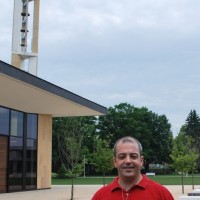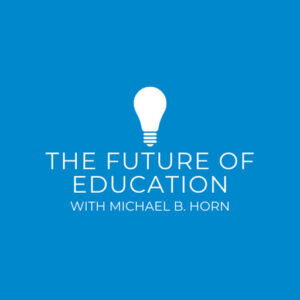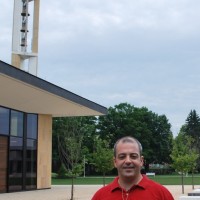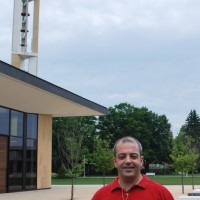March 22, 2023
Absenteeism and Truancy in California Schools
I haven’t had a chance to review the report that is mentioned at the top of this newsletter, but I suspect that it will be relevant to readers of this space.
View this email in your browser
A new PACE commentary calls for urgent action to address the spike in school absenteeism following the COVID-19 pandemic. Authors Kevin Gee, Heather Hough, and Belen Chavez show that students of color experienced some of the largest increases, presenting troubling equity implications for our state’s most vulnerable youth populations.
The commentary reflects findings from a new PACE report that used data from the California Department of Education to identify disparities in labeling school absences unexcused. Report authors Clea McNeely, Hedy Chang, and Kevin Gee analyzed data from the 2017–18, 2018–19, and 2021–22 school years and found that the statewide percentage of absences labeled unexcused held constant at around 38 percent yet varied significantly by school. Socioeconomically disadvantaged students and students of color were more likely to have their absences labeled unexcused, with Black students experiencing the largest disparity. This is particularly problematic since accumulating too many unexcused absences places students at risk of becoming classified as “truant.” This can lead to involvement with the court system as well as still greater risk of not being able to engage academically and nonacademically—missing opportunities to complete make-up work and exclusion from extracurricular activities are penalties for unexcused absences.
The report makes several recommendations, including using attendance data to identify disparities and bright spots; strengthening monitoring of reasons for absences; updating policies related to unexcused absences; improving communication of attendance policies to students and families; and investing in professional development to improve attendance practices.
On proposed Assembly Constitutional Amendment 9, PACE Executive Director Heather Hough—in Los Angeles Times article “After COVID-19 school chaos, California lawmakers debate role of superintendent”—states: “I think the pandemic really brought it into view for the public in a way that it wasn’t before: Why do we have an elected official if that position doesn’t have the ability to lead associated with it?”
EdSource article “Newsom proposes ‘literacy road map’ based on ‘science of reading’; will districts follow or ignore it?” quotes PACE Executive Director Heather Hough: “A road map can set a vision, but structures must be in place to ensure it is implemented by collecting data and holding people accountable.”
In the EdSource article “Proposed constitutional amendment would make state superintendent of public instruction an appointed position,” PACE Executive Director Heather Hough cites the 2022 PACE/USC Rossier poll, which found that voters don’t know much about the position of superintendent of public instruction or how to evaluate those who hold it.
Released on March 14, 2023, a new analysis by researchers at UCLA and UC Riverside shows that even in Blue state California, political attacks on public schools are pervasive and growing, hindering learning and the role schools play in a diverse democracy. The research brief “Educating for a Diverse Democracy in California” draws upon a representative survey of 150 California high school principals conducted in 2022 examining the chilling effect of political conflict in the nation’s schools. Key findings include:
- Political conflict is pervasive and growing, particularly in communities where the 2020 presidential vote for Donald Trump was between 45% and 54.9%.
- Political division and community-level conflict is shaping student interactions, with more than two thirds of California principals reporting that students made demeaning or hateful remarks to liberal or conservative classmates.
- Many California students—especially Black, Latinx, and LGBTQ+ students—experience hostility and intolerance in school, with nearly half of principals reporting that incidents of intolerance have increased in number since the pandemic.
~~~
On March 6, 2023, PACE held a webinar to present new research on 12th-grade math and course-taking in California indicating that nearly half of high school graduates do not meet the math requirements of state universities or are ill-prepared for college math. The webinar also presented research on how partnerships between university faculty and high school math specialists can lead to the development of new, innovative math courses that increase equitable access to advanced math and improve student outcomes.Panelists included:
Michal Kurlaender, Professor of Education Policy, University of California, Davis
Sherrie Reed, Executive Director, California Education Lab, University of California, Davis
Osvaldo Soto, Director, Discrete Math Project Collaborative, University of California, San DiegoSlides from and a video recording of the webinar are now available.



Copyright © 2023 Policy Analysis for California Education, All rights reserved.
.Our mailing address is:Policy Analysis for California Education
520 Galvez MallStanford, CA 94305-3001
No comments yet.
RSS feed for comments on this post. TrackBack URI
- SEO Powered Content & PR Distribution. Get Amplified Today.
- Platoblockchain. Web3 Metaverse Intelligence. Knowledge Amplified. Access Here.
- Source: https://virtualschooling.wordpress.com/2023/03/22/absenteeism-and-truancy-in-california-schools/
- :is
- 10
- 2020
- 2022
- 2023
- a
- ability
- Able
- About
- access
- Action
- activities
- address
- advanced
- All
- analysis
- and
- Angeles
- appointed
- ARE
- around
- article
- AS
- associated
- At
- Attacks
- attendance
- available
- based
- BE
- becoming
- before
- begin
- being
- between
- Black
- Blue
- Bright
- brought
- by
- california
- Calls
- CAN
- case
- Category
- Center
- Chance
- Chaos
- classified
- clear
- collaborative
- Collecting
- College
- color
- comment
- comments
- Communication
- Communities
- complete
- conducted
- conflict
- conservative
- constant
- courses
- Court
- COVID-19
- COVID-19 pandemic
- data
- debate
- Democracy
- Department
- Development
- Director
- diverse
- Division
- Doesn’t
- Donald Trump
- Dont
- Education
- effect
- elected
- engage
- ensure
- equity
- evaluate
- Even
- Examining
- executive
- Executive Director
- experienced
- experiencing
- families
- feedback
- follow
- following
- For
- found
- from
- greater
- Growing
- Half
- Have
- Held
- High
- hold
- holding
- How
- How To
- HTTPS
- i
- identifier
- identify
- implemented
- implications
- improve
- improving
- in
- include
- included
- Including
- Increase
- increased
- Increases
- indicating
- innovative
- interactions
- investing
- involvement
- IT
- jpg
- Key
- Know
- lab
- labeling
- largest
- lawmakers
- lead
- learning
- likely
- made
- make
- MAKES
- many
- map
- March
- math
- Meet
- mentioned
- Meta
- Michael
- monitoring
- more
- most
- Nations
- nearly
- New
- Newsletter
- number
- of
- official
- on
- opportunities
- Pace
- pandemic
- particularly
- partnerships
- People
- percent
- percentage
- Place
- Places
- plato
- Plato Data Intelligence
- PlatoData
- Play
- policies
- policy
- political
- populations
- position
- Post
- practices
- presented
- presidential
- professional
- Professor
- project
- proposes
- public
- readers
- reasons
- recommendations
- recording
- reduce
- reflects
- related
- relevant
- report
- Reporting
- representative
- Requirements
- research
- researchers
- reserved
- resource
- review
- rights
- Risk
- Riverside
- road
- Role
- San
- School
- Schools
- set
- several
- shaping
- show
- Shows
- significantly
- Simple
- since
- site
- some
- Space
- spam
- specialists
- spike
- State
- Still
- strengthening
- Student
- Students
- Survey
- syndication
- system
- TAG
- that
- The
- their
- to
- too
- top
- troubling
- trump
- ucla
- under
- Universities
- university
- University of California
- updating
- urgent
- Video
- View
- vision
- Vote
- voters
- Vulnerable
- Way..
- webinar
- WELL
- which
- WHO
- will
- with
- WordPress
- Work
- would
- years
- Your
- youth
- youtube
- zephyrnet














